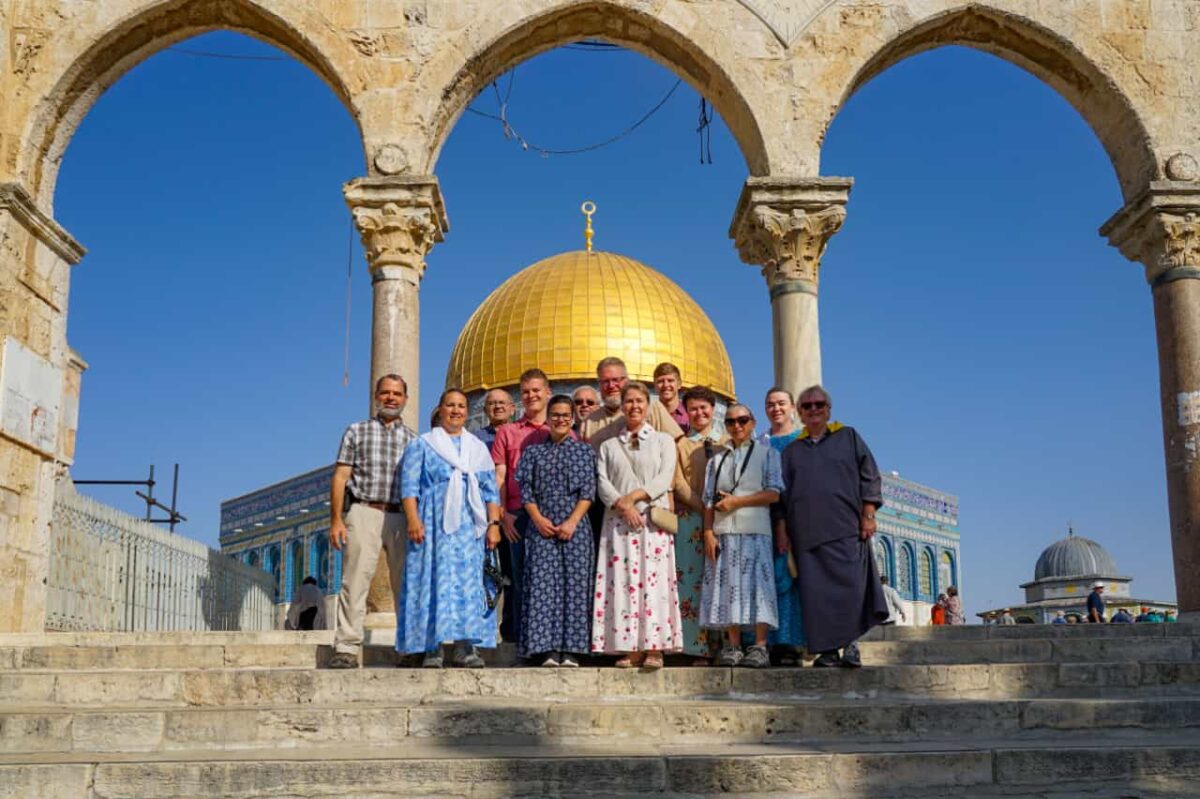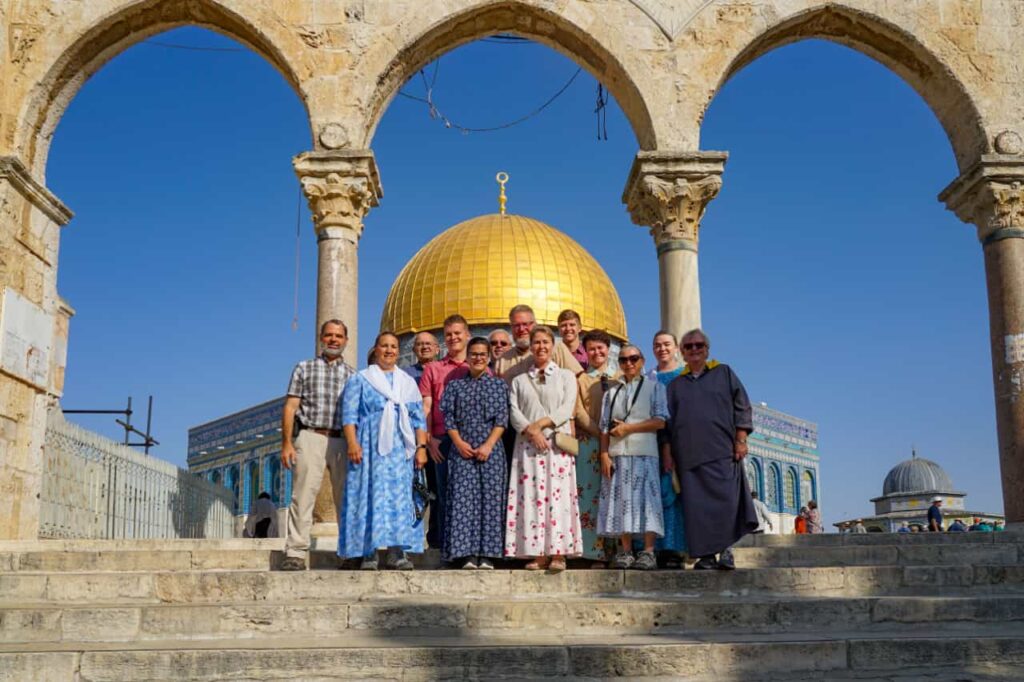
Today our tour began with viewing the various ruins on the Temple Mount, the holiest property in all Israel, and claimed as a religious spot by Jews, Muslims and Christians. Muslims claim the mount for Allah as that is where the rock remains with the footprint of Mohammad when he ascended. Jews claim the Western Wall since it is the closest they can come to approach the Holy of Holy place. For the Christian, it is Mt Moriah, and the temple site where Mary & Joseph would have taken Jesus, and where he went to celebrate passover as a child and later in his ministry. We viewed the place of Solomon’s stables, the Golden Gate, which has been secured since it was built, Antonio’s fortress, and numerous other structures.
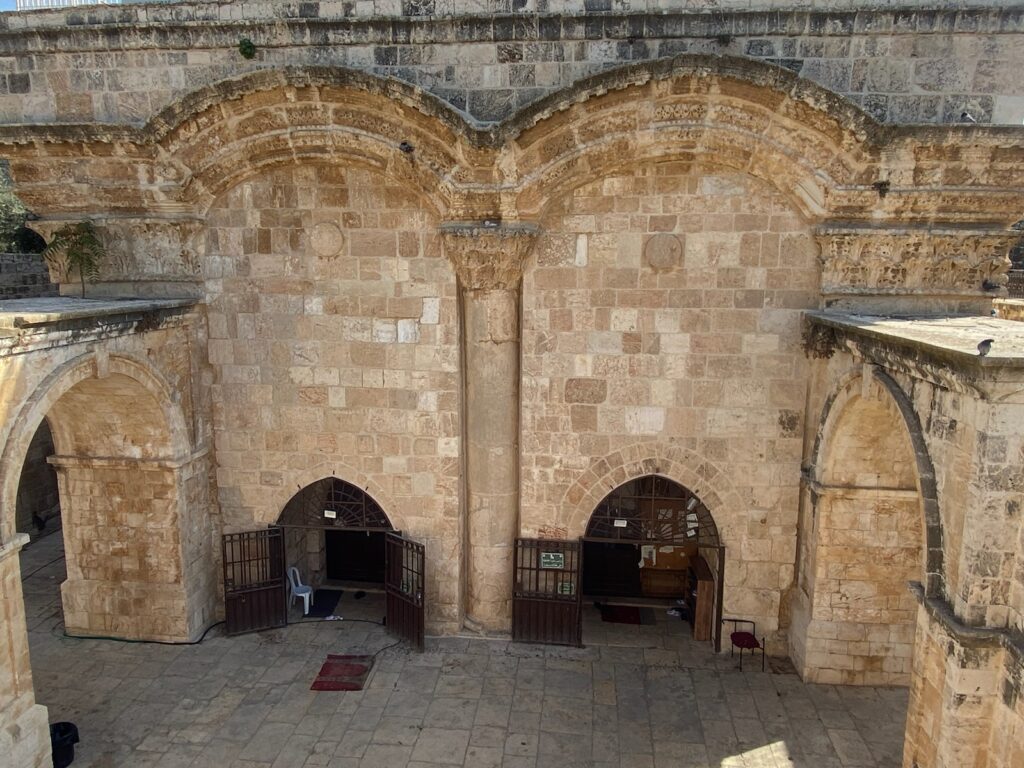
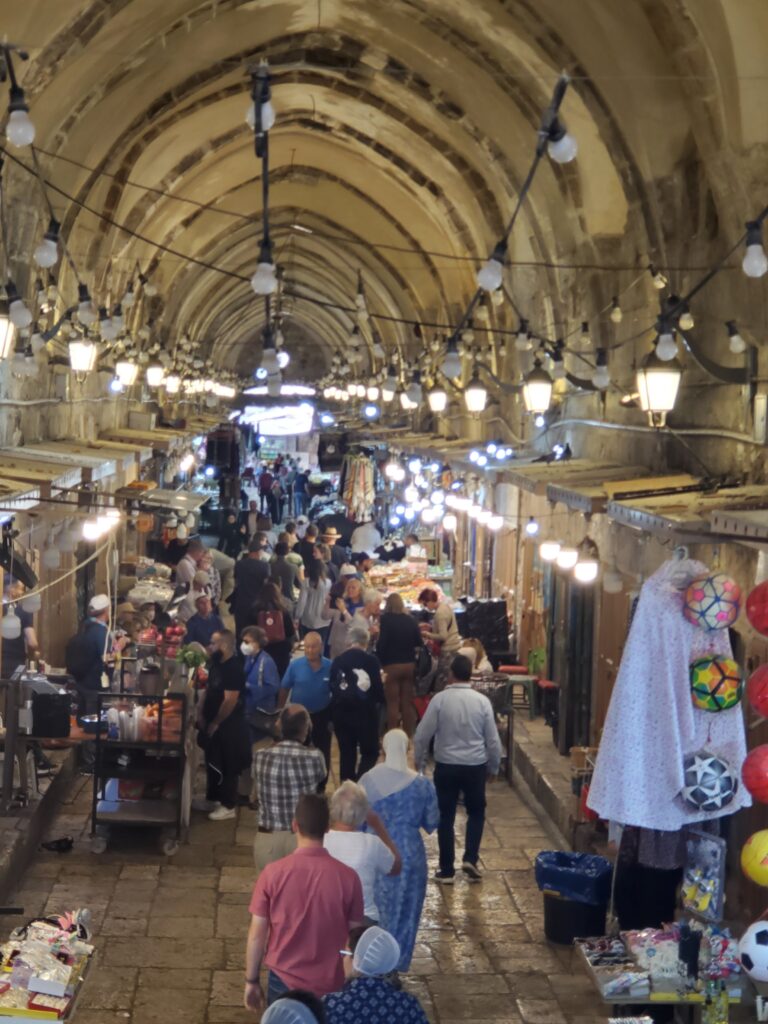
Our Temple Mount tour ended by exiting through the Cotton gate into the Muslim market. We continued on foot to the Jewish quarter where we met Moshe at his Shorashim Shop to discuss his interpretation of scripture through a Jewish versus Christian view.
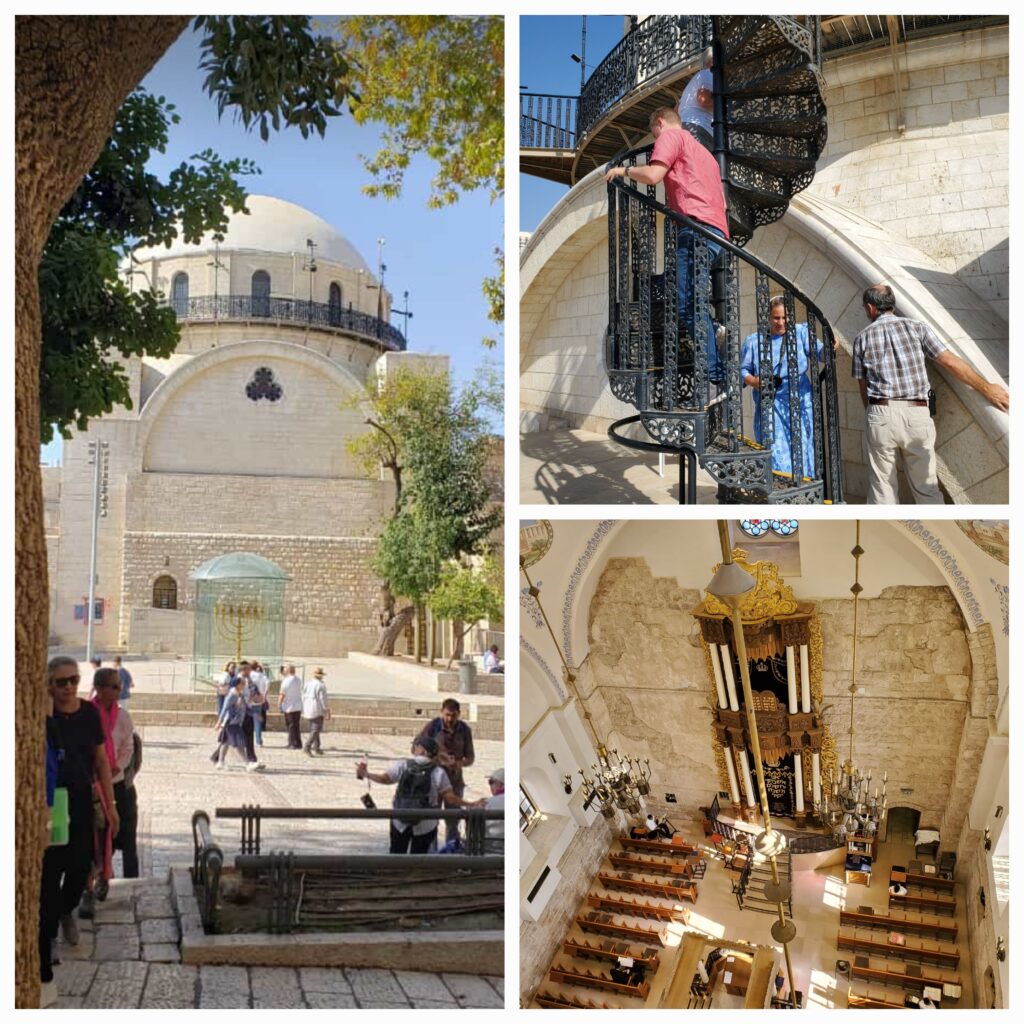
We purchased lunch on the street in the Jewish Square where the Golden Candlestick resides until the building of the 3rd temple. Beyond it stands the Hurva synagogue which was originally built by the Ashkenazi Jews and destroyed in 1948. More recently, it was rebuilt incorporating a portion of the original stone structure and completed in 2010 according to the original blueprint. The wrap around balcony has phenomenal acoustics! When standing directly across from each other, even a whisper could be heard!
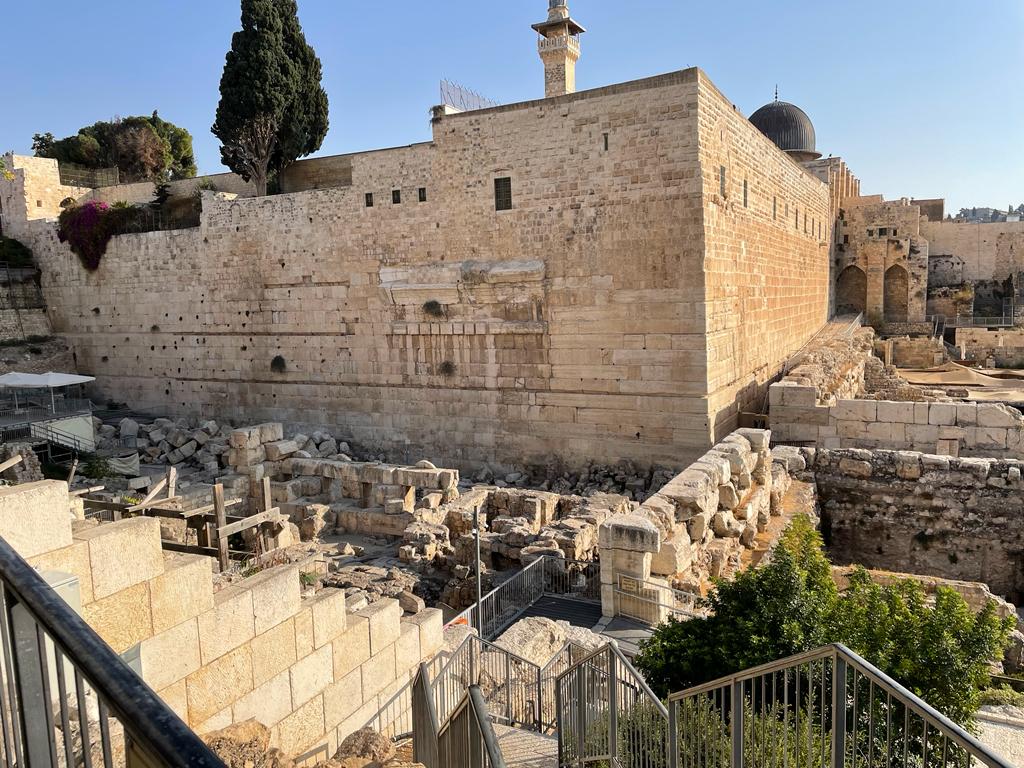
Our tour guide took us through narrow, cobblestone streets and alleys to our next destination at the Southern steps outside Temple Mount where we viewed original stones thrown down from the second temple, the pinnacle of the temple, remains of Wilson’s arch, Robinson’s arch, and the place of trumpeting, where the priest would blow the trumpet.
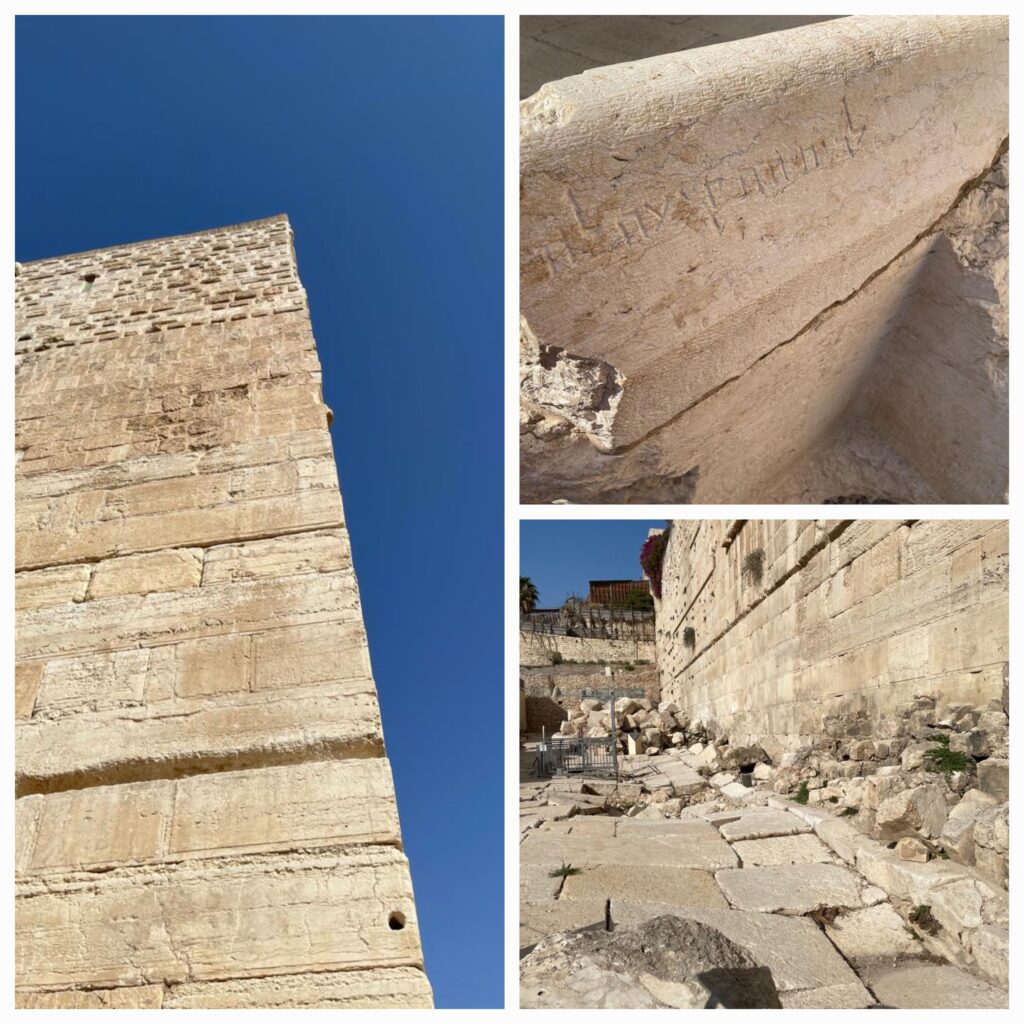
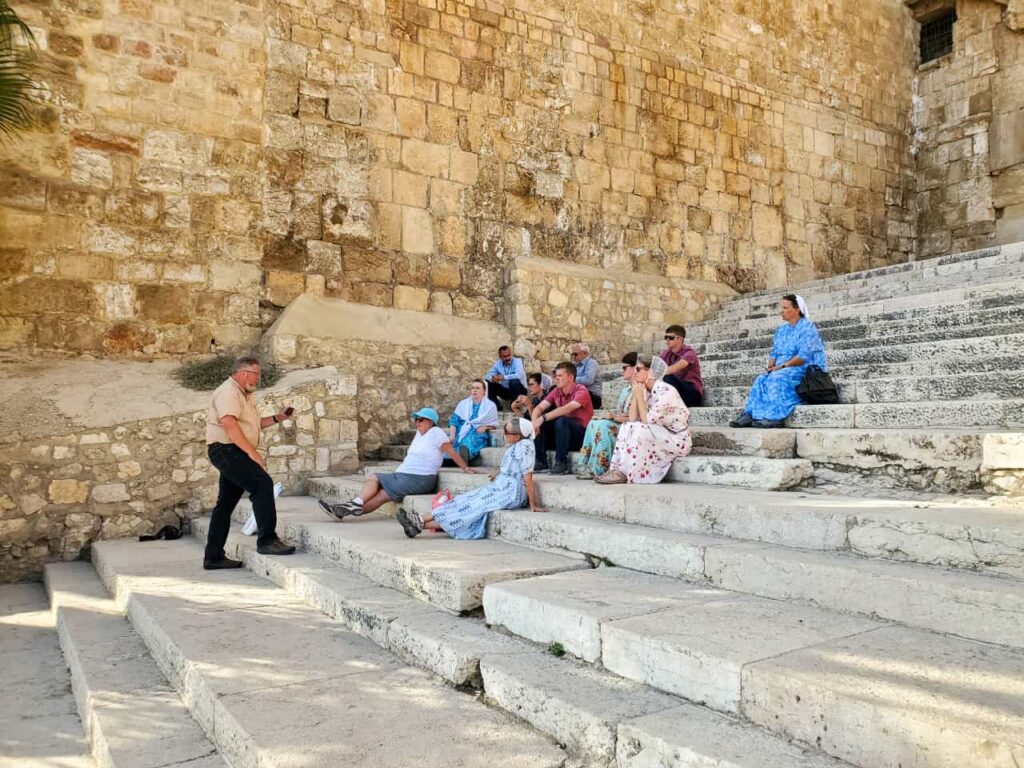
Andrew also taught us that these steps were spaced unevenly so as to be intentional when bringing a sacrifice and approaching God’s presence. There are still some of the original steps intact that Jesus could have walked on as he was teaching the crowds. This is also where he would have walked from the Mt of Olives and into the city before his crucifixion.
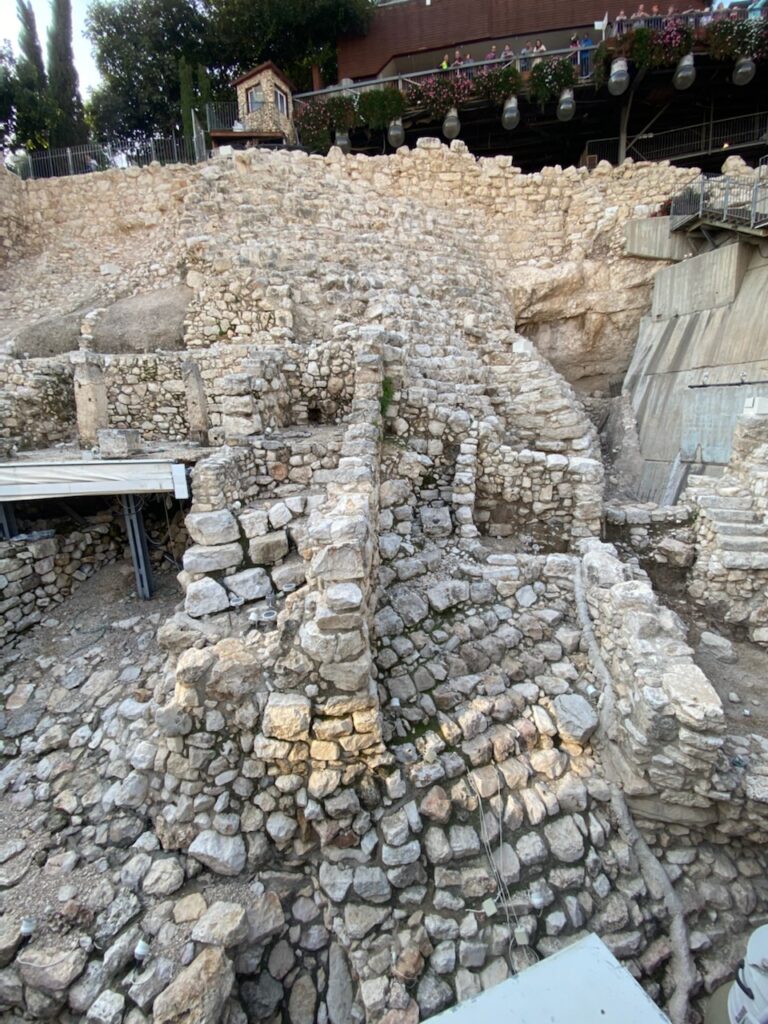
In David’s City we viewed more excavations that could have been David’s palace according to the type of structure and furnishings found in it. We continued on down the path to the entrance of Hezekiah’s Tunnel built in about 7th or 8th century BC. Two main water systems, Warren’s shaft and Hezekiah’s tunnel, allowed water from Gihon Spring to be channeled into the City of David. It was a bit more challenging for some than others to pass through the low, narrow areas in the 1,750′ long tunnel in 12″-15″ of 64.4° clear spring water with headlamps to light our way. The acoustics were also great as we sang “Open the Wells of Grace and Salvation”. The Tunnel exits at the Pool of Siloam which was rediscovered in 2004. From there we were able to travel a few of the excavated stairs of the Pilgrim Road.
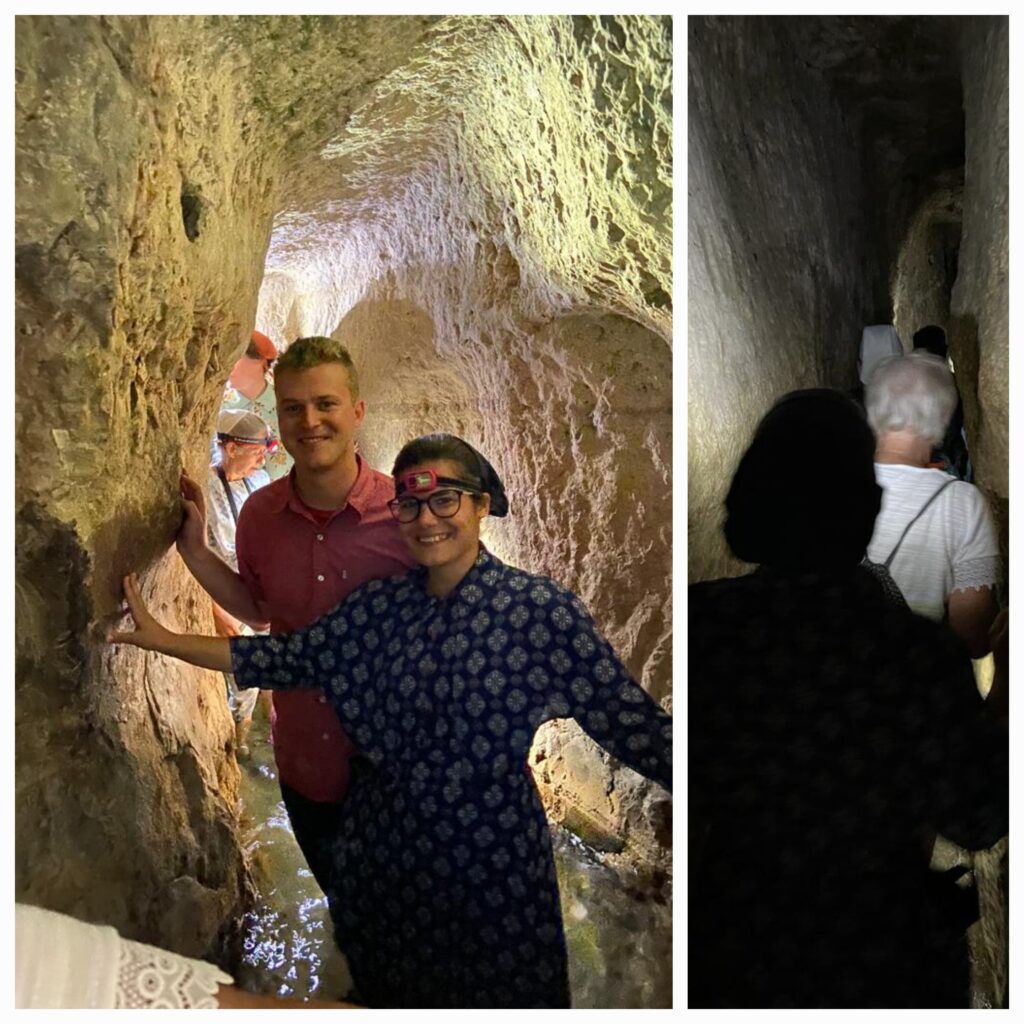
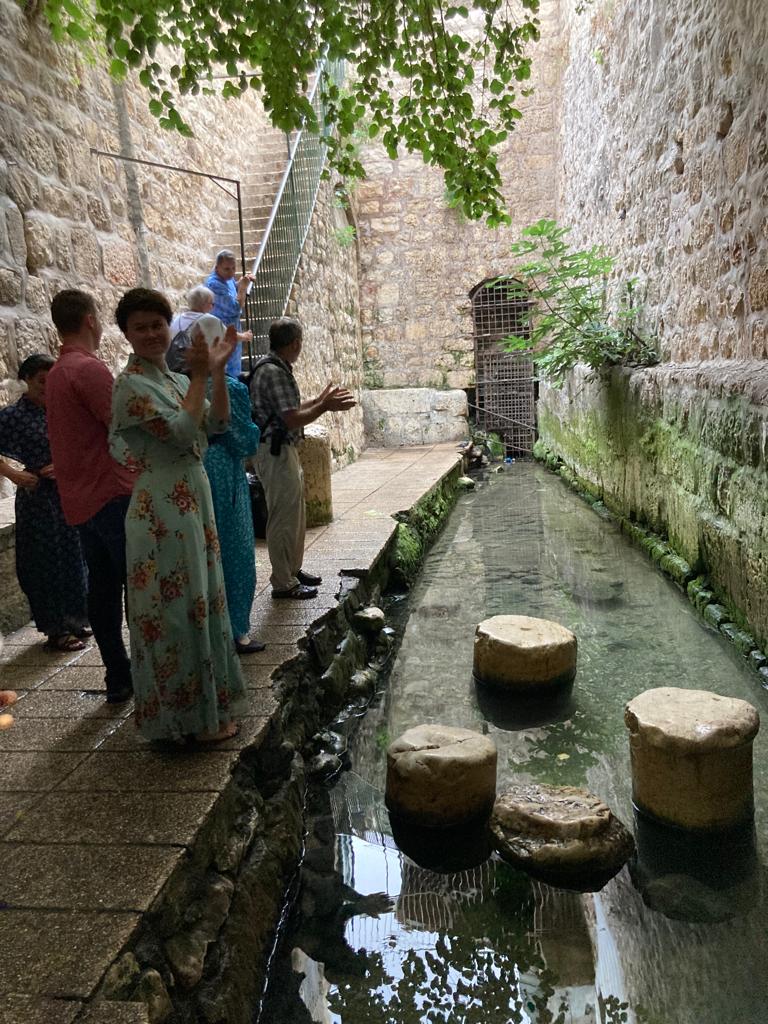
The tour ended early enough to refresh ourselves and renew our energy with supper then take the tram to Ben Yehuda Street for shopping and breathing more of the Jerusalem air. It’s been another inspirational day in the Land!
